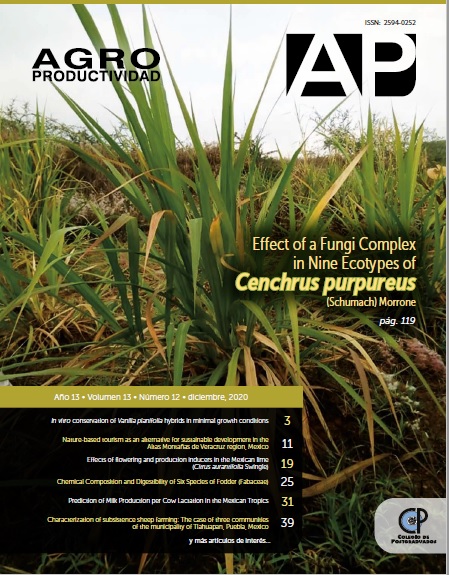FLOWERING DYNAMICS IN ALFALFA BASED ON HEAT UNITS
Main Article Content
Keywords
Growing, accumulated growing degree days, flowering.
Abstract
Objective: Describe the sequential pattern of the reproductive development of alfalfa (flowering dynamics) through the relationship between the floral nodes of the main stem and the accumulated growing degree-days (GDD), under different environmental conditions, and determine the feasibility of this relationship as a predictor of the seed harvest date.
Design/methodology/approach: It was carried out in random blocks in a 2 x 5 factorial arrangement, with two repetitions. Each repetition consisted of 30 plants.
Results: Flowering dynamics followed the same pattern between varieties, with a linear relationship between GDD and number of flower nodes. Year Y0 was different from years Y1 and Y2. Therefore, Y1 with cut, and Y2 with and without cut, presented less GDD, during the flowering period. In contrast, Y0 showed more GDD during this period. In the different environmental conditions, the linear curves of the flowering dynamics became erratic from the tenth floral node (300 GDD), due to the low frequency of plants with more than 10 flower nodes along the main stem.
Limitations on study/implications: A meteorological station near the alfalfa seed production site is necessary to obtain the GDD required for the prediction of the seed harvest time.
Findings/conclusions: The reproductive development of alfalfa presents a linear relationship between the number of floral nodes and GDD, allowing this relationship to predict the optimal harvest date of the seed, in any environmental condition that occurs.

